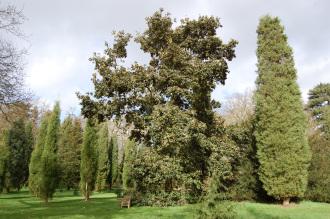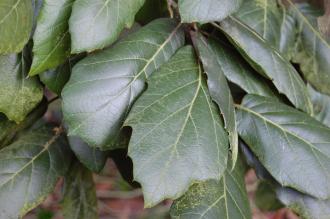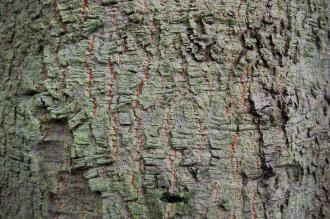
Quercus crassifolia (01/03/2015, Kew Gardens, London)
Position: Full Sun to partial shade
Flowering period: Spring
Soil: Moist, well drained
Eventual Height: 20m
Eventual Spread: 15m
Hardiness: 7b, 8a, 8b, 9a, 9b, 10a, 10b, 11
Family: Fagaceae
Quercus crassifolia is an evergreen tree with an irregular habit. Its glossy dark green leaves are oblong to elliptic with up to 5 pairs of shallow lobes, up to 16cm long and 10cm broad. The trunk can achieve a diameter of 50cm. Its grey/ brown bark is vertically fissured. The male flowers of the tree are yellow green catkins and are up to 10cm long. Its fruit is an ovoid acorn, 2cm long and 1cm broad, in a half round cup.

Quercus crassifolia Leaf (01/03/2015, Kew Gardens, London)
Quercus crassifolia, commonly known as Chilillo Oak is native to Mexico and Guatemala. In its native habitat it grows in Pine/ Oak forests at an altitude of 1900m to 2800m on stony ground.
The etymological root of the binomial name Quercus is derived from the Latin name for an Oak tree, but some authorities believe it to be derived from the Celtic quer meaning ‘fine’ and cuez meaning ‘a tree’. Crassifolia is derived from the Latin crassus meaning ‘thick’ and folius meaning ‘leaf”
When available the landscape architect may find Quercus crassifolia useful as a broadleaved evergreen specimen tree.

Quercus crassifolia Bark (01/03/2015, Kew Gardens, London)
Ecologically, Quercus crassifolia leaves and acorns are eaten by mammals and some birds.
Quercus crassifolia prefers moist, well-drained soils. It tolerates most pH of soil.
Quercus crassifolia requires little maintenance.

